For those that long for the ancient Silk Road splendors from Central Asia, Uzbekistan serves snippets of those former glories, arranged with modern conveniences.
The doubly landlocked country in the heart of Eurasia offers a peculiar mishmash of cultural relics: luminous minarets, voluptuous domes and tortuous mosaics, often next to classical Russian architectures and ideological socialist sculptures.
Coming out of seven decades of soviet rule through independence in 1991, Uzbekistan has steadily engaged the world, using tourism as a new growth engine. To highlight the country’s touristic treasures, the Uzbek embassy held a press conference on June 13 at Lotte Hotel in Seoul.
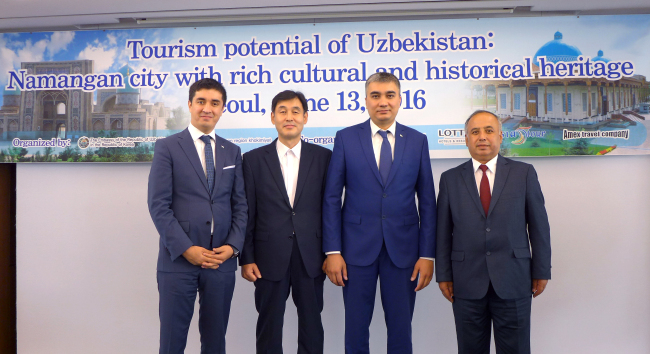 |
Participants pose at a tourism seminar organized by the Uzbek embassy on June 13 at Lotte Hotel in Seoul. From the left are Uzbektourism representative Khoshimjon Gaybullayev, Hanjin Travel vice-president Lee Hong-jae, Uzbek Ambassador Botirjon Asadov and Asia Tour general manager Akmal Kasimov. (Joel Lee / The Korea Herald) |
“This year marks the 25th anniversary of our independence, and during this period our country has achieved great transformative changes in all areas,” said Uzbek Ambassador Botirjon Asadov in a speech. “Over the last several years, our tourism sector has grown significantly in both quantity and quality, attracting over 2 million tourists from some 70 countries.”
As Uzbekistan and Korea have shared an intertwined history through commercial and cultural interactions along the Silk Road for hundreds of years, Uzbekistan is particularly appreciated by Korean travelers, he added.
Last year, 27,000 Koreans travelled to Uzbekistan and the number is growing by leaps and bounds, according to the embassy. A bilateral memorandum of understanding in tourism cooperation was signed in 2012.
Noting that the two countries are strategic partners in diplomacy, trade and investment, economic modernization, social reforms, cultural collaboration and humanitarian assistance, the envoy said his government has paid great heed to the well-being of ethnic Koreans in Uzbekistan, known as “Goryoins.”
The Seoul Park was built in downtown Tashkent in 2014 to preserve goryoins’ unique traditions and arts, and a Korean cultural house is in the works for opening next year.
 |
Registan square in Samarkand (Uzbektourism) |
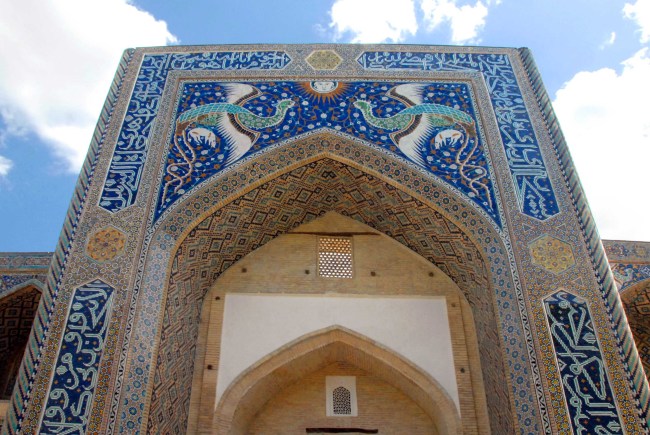 |
A historical building in Samarkand (Uzbektourism) |
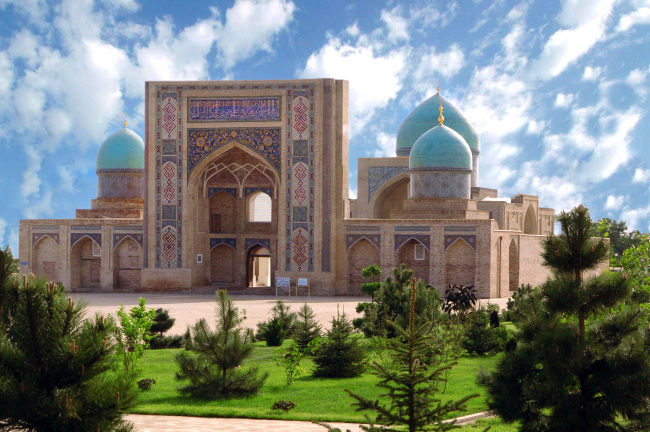 |
A historic building in Samarkand (Uzbektourism) |
As a lynchpin of the East and the West, Uzbekistan has embraced diverse peoples and cultures that traversed across the ancient caravan trade route. Its cities -- Tashkent, Samarkand, Bukhara, Karshi, Khiva and Termez -- have been “precious pearls,” absorbing “all the originality and beauty of the region,” according to the national company Uzbektourism.
Tashkent -- the national capital in the east -- has existed for over 2,500 years, as a civilizational center of gravity for Uzbeks. Divided into two areas by the Anchor River, the old town houses ancient palaces and memorial complexes, while the new town is home to modern businesses, cultural centers and shopping malls.
Bukhara, located in the middle of the country, is a “living museum” with 140 architectural monuments –- mausoleums, mosques and madrassas with bathhouses, walls and gates –- from over 2,500 years. According to archaeologists, humans have inhabited in and around Bukhara for at least five millennia. For being an epicenter of trade, scholarship, culture and religion on the ancient Silk Road, it has been designated a UNESCO World Heritage Site.
Samarkand on the southeast was the ancient capital of the Timurid Empire (A.D.1370-1507), a Persianized Turco-Mongol empire comprising modern-day Iran, the Caucasus, Mesopotamia, Afghanistan, much of Central Asia, as well as parts of Pakistan, Syria, and Turkey. Called “the precious jewel of the Eastern World” and “Rome of the East” by poets of the last century, it is a well-preserved museum of Central Asian civilizations.
Khiva –- the last capital of the ancient Iranian Khwarezmian civilization in the 12th and 13th century –- is where the folk tale “One Thousand and One Nights” or the “Arabian Nights” purportedly came into being. As a UNESCO World Heritage Site, it has 54 historical monuments, including 8 palaces, 1 caravanserai, 16 minarets and numerous mosques and madrassas.
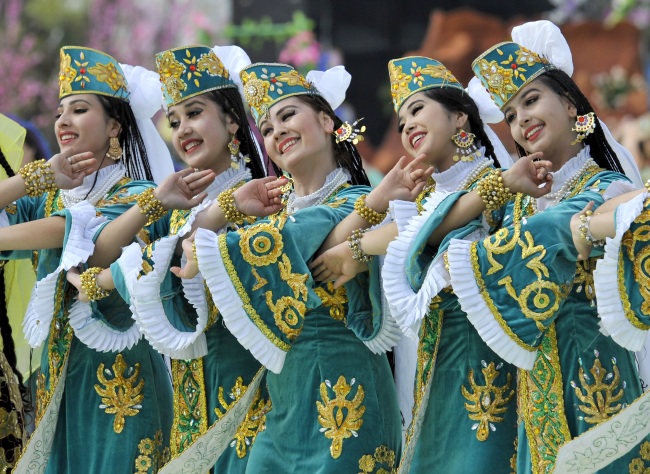 |
Uzbek women perform a dance in traditional dresses during a national festival (Uzbektourism) |
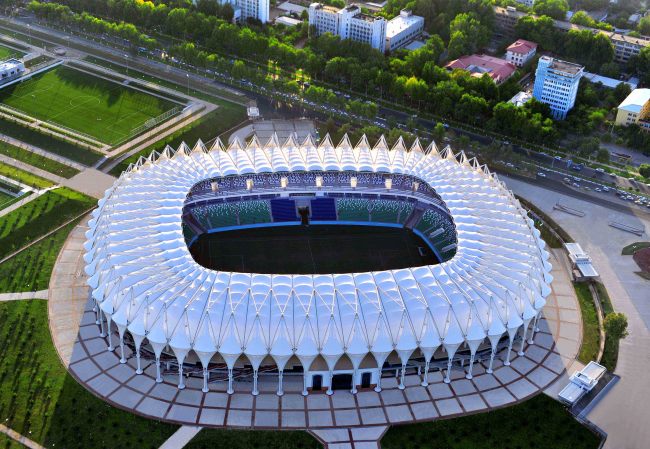 |
Bunyodkor soccer stadium in Tashkent (Uzbektourism) |
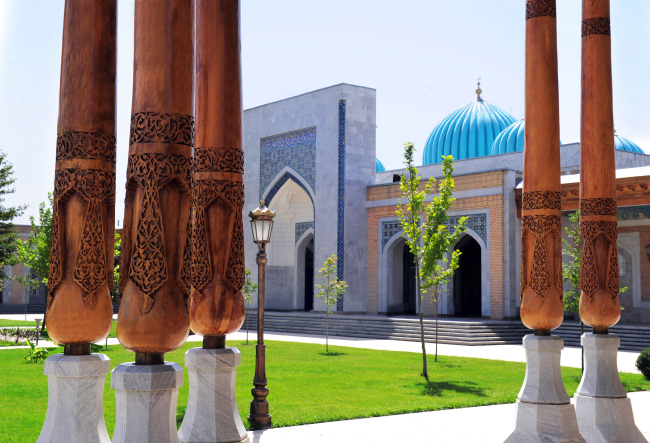 |
A madrasa in Tashkent (Uzbektourism) |
Uzbekistan is an underestimated ecotourism destination. Located high in altitude amid rugged landscapes, there are deserts with oases, alpine meadows, green valleys, snow-capped mountains, lush rivers and tranquil lakes. 100 hiking trails are interlaced with historic monuments and buildings.
The country has 490 tourism accommodation facilities, including luxury hotels and camping sites, nestled between the high mountains and ancient ruins.
11 direct flights run between Tashkent and Seoul every week through the Uzbekistan Airways, the Korean Air and the Asiana Airlines.
By Joel Lee (
joel@heraldcorp.com)














